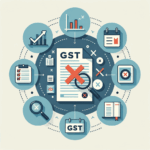Supreme Court on Reassessment Notices: Key Takeaways for Taxpayers
Received a surprising tax notice for a past year? You’re not alone. In 2021, a significant number of taxpayers, from small business owners to salaried individuals, were left confused after receiving income tax reassessment notices. This confusion stemmed from a major change in tax law introduced by the Finance Act 2021, which established a new, more transparent procedure for reopening past tax assessments. Despite these new rules coming into effect on April 1, 2021, the Income Tax Department continued to issue nearly 90,000 notices under the old, repealed law. This created widespread legal uncertainty, leading to a landmark intervention by the country’s highest court. This post will break down the crucial Supreme Court tax reassessment notices verdict and explain exactly what it means for you. By the end, you will understand the impact of this ruling, your rights as a taxpayer, the precise steps to take if you’ve received such a notice, and how this fits into the broader picture of recent tax law changes in India. For a wider context, our post on The Impact of Recent Tax Law Changes on Businesses offers more insights.
Understanding Tax Reassessment in India: The Old vs. The New
To fully grasp the Supreme Court’s decision, it’s essential to understand the basics of tax reassessment and the significant procedural changes introduced in 2021. The term “reassessment” itself can sound intimidating, but it is a standard procedure used by the tax authorities when they have reason to believe that a taxpayer’s income for a particular year was not fully declared or was under-reported, thereby “escaping assessment.” This entire process is a core part of understanding tax reassessment in India. The legal framework governing this process was substantially overhauled, creating a clear distinction between the old regime and the new, more taxpayer-centric system that is now in place.
What is a Reassessment Notice (Section 148)?
In simple terms, a reassessment notice, issued under Section 148 of the Income Tax Act, is an official communication from the Income Tax Department. Our detailed guide on Section 148: Reassessment of Income and Its Implications covers this topic thoroughly. It informs you that the department has reason to believe that some of your income for a specific past assessment year was not taxed. This could happen for various reasons, such as:
- Undeclared interest earned from a savings account or fixed deposit.
- Failure to report capital gains from the sale of property or stocks.
- Business income or professional fees that were not disclosed in your tax return.
- Information received from other financial institutions or government agencies that doesn’t match your filed return.
The purpose of this notice is to give the tax officer (Assessing Officer or AO) the legal authority to reopen your case and re-calculate your tax liability for that year.
Key Differences: Pre-Finance Act 2021 vs. Post-Finance Act 2021
The Finance Act 2021 brought about a paradigm shift in how reassessment proceedings are initiated. The new process is designed to be more transparent and less arbitrary, strengthening taxpayer rights under the Supreme Court ruling. Here’s a clear comparison:
| Feature | Old Law (Before April 1, 2021) | New Law (After April 1, 2021) |
|---|---|---|
| Initial Step | The Assessing Officer could directly issue a Section 148 notice based on their “reason to believe.” | A mandatory preliminary inquiry under Section 148A must be conducted first. |
| Taxpayer’s Role | The taxpayer’s first chance to respond was after receiving the formal Section 148 notice. | The taxpayer receives a show-cause notice and has the right to be heard before a formal Section 148 notice is even issued. |
| Time Limit | Notice could be issued up to 6 years from the end of the relevant assessment year. | Notice can generally be issued only up to 3 years from the end of the relevant assessment year. |
| Extended Time Limit | In cases where escaped income was ₹1 lakh or more, the time limit was 6 years. For assets located abroad, it was 16 years. | The time limit can be extended up to 10 years, but only if the alleged escaped income is over ₹50 lakh and represented in the form of an asset. |
| Basis of Action | Based on “reason to believe,” which could sometimes be subjective. | Based on information flagged in the taxpayer’s case that suggests income has escaped assessment, making it more data-driven. |
This shift from a direct notice to a preliminary inquiry is the most critical change, as it provides a fair opportunity for the taxpayer to clarify any discrepancies at the outset.
The Landmark Supreme Court Ruling on Tax Reassessment Notices
The heart of the issue lay in the transition period. The new, taxpayer-friendly laws were effective from April 1, 2021. However, between that date and June 30, 2021, the Income Tax Department issued a massive wave of reassessment notices using the procedures and time limits of the old, now-defunct law. This led to a flood of petitions in various High Courts across India, challenging the validity of these notices. The conflicting judgments from different High Courts created nationwide confusion, necessitating a final, binding decision from the Supreme Court. This led to one of the most significant Supreme Court decisions affecting income tax in India in recent times.
The Core Conflict: Why Did the Supreme Court Intervene?
As taxpayers began challenging the notices, several High Courts, including those of Delhi, Bombay, and Allahabad, ruled in their favor, quashing the notices as legally invalid. They argued that any notice issued after March 31, 2021, must strictly adhere to the new procedure laid out in the Finance Act 2021. However, some other High Courts took a different view, upholding the department’s actions. This judicial inconsistency meant that whether your notice was valid or not depended on which state you were in. To resolve this chaos and establish a uniform law for the entire country, the Supreme Court took up the matter in the case of Union of India vs. Ashish Agarwal.
Key Directives from the Supreme Court (UOI vs. Ashish Agarwal)
The Supreme Court, in a balanced judgment, sought to protect the interests of both the revenue department and the taxpayers. It issued clear directives that serve as the definitive Supreme Court guidelines for tax reassessment notices issued during that specific period.
- Directive 1: Notices are Not Invalid: The Court decided not to quash the nearly 90,000 notices. It invoked its special powers under Article 142 of the Constitution to state that these notices would be upheld to prevent the revenue department from losing out on legitimate tax collection due to a procedural error.
- Directive 2: Deemed to be under the New Law: This is the most crucial part for taxpayers. The Supreme Court ordered that all notices originally issued under the old Section 148 shall be treated as show-cause notices issued under Section 148A(b) of the new law.
- Directive 3: Follow New Procedure: Consequently, the Income Tax Department must now comply with the entire procedure of the new law. This means the department cannot proceed directly to reassessment. It must first provide the taxpayer with the information and material relied upon, give them an opportunity to respond, and then pass a formal order under Section 148A(d) before issuing a final Section 148 notice.
What This Means for You: The Real Impact of the Supreme Court Ruling on Tax Notices
The judgment is a significant win for taxpayer rights. In simple terms, while your notice has not been cancelled, it has been downgraded. It is no longer a formal demand for reassessment but a preliminary inquiry. The real impact of the Supreme Court ruling on tax notices is that you now get the full protection and benefits of the new, more transparent process. You have a legal right to know the exact reasons for the inquiry, review the evidence the department has against you, and present your case with supporting documents before your assessment is formally reopened. This prevents arbitrary actions and ensures that the principles of natural justice are followed.
Your Action Plan: What to Do if You Received a Reassessment Notice
If you are one of the thousands who received a reassessment notice issued between April 1, 2021, and June 30, 2021, the Supreme Court’s ruling has laid out a clear path forward. While this article covers the specifics, our general Responding to Income Tax Notices: A Step-by-Step Guide also provides valuable information. It is vital to act methodically and not panic. Here is a step-by-step guide to follow.
Step 1: Acknowledge the Notice Immediately
The first and most important rule when dealing with any communication from the Income Tax Department is to never ignore it. Ignoring a notice can lead to penalties and gives the impression that you have something to hide. Make a note of the date you received the notice and check the deadline mentioned for a response. While the SC ruling has changed the nature of the notice, timely acknowledgment is still a professional and wise first step.
Step 2: Wait for Information from the Assessing Officer (AO)
As per the Supreme Court’s directives, the onus is now on the Assessing Officer. The AO is legally required to provide you with all the information and material that formed the basis for their belief that your income had escaped assessment. This information should be provided to you within 30 days of the Court’s order or your receipt of the notice. Do not file a premature or incomplete reply. Wait until you receive this crucial information packet from the department, as your entire defense will be built around it.
Step 3: Prepare and File a Detailed Response
Once you receive the information from the AO, you will typically be given two weeks to file a written response. This is your opportunity to present your case clearly and factually. Your response should be structured, comprehensive, and supported by evidence.
- Address each point: Go through the department’s allegations one by one and provide a clear, point-wise rebuttal.
- Provide factual counter-arguments: If the department claims an undisclosed bank deposit, explain the source of the funds. If they point to a property sale, provide details of the capital gains calculation as per your tax return.
- Attach supporting documents: This is critical. Your arguments must be backed by proof. Attach copies of relevant documents such as bank statements, ITR acknowledgements, loan documents, sale deeds, investment proofs, and any other evidence that substantiates your claims.
Step 4: Seek Professional Help from Tax Experts
While you can respond on your own, the impact of the Supreme Court ruling on tax notices involves legal nuances that can be complex. If the alleged escaped income is significant, the allegations are complicated, or you feel overwhelmed by the process, it is highly advisable to consult a tax professional. An expert can help you understand the specific allegations, identify the weaknesses in the department’s case, and draft a legally sound and persuasive response.
Our team at TaxRobo specializes in handling such notices. We can help you draft a legally sound response and represent your case, ensuring your rights are protected throughout the process. Get professional assistance with your tax notice from TaxRobo’s expert team.
Conclusion
The Supreme Court’s verdict on reassessment notices is a landmark decision that has skillfully balanced the scales between the revenue’s interests and the taxpayer’s rights. By validating the old notices but mandating that they follow the new, more equitable procedure, the court has provided much-needed clarity and prevented endless litigation. The ruling on Supreme Court tax reassessment notices has effectively ushered in a new era of transparency, reinforcing the principle that taxpayers must be given a fair chance to be heard before a formal reassessment is initiated. For individuals and small business owners, the key takeaway is empowerment. You now have a clear process to follow and a protected right to defend your case at the preliminary stage.
Don’t navigate tax complexities alone. A timely, well-drafted, and factually accurate response is your best defense. Whether you’re a small business owner or a salaried employee, TaxRobo is here to guide you through every step. Contact us today for expert tax consultation.
FAQ Section
Frequently Asked Questions about the Supreme Court’s Reassessment Ruling
Q1. Does this ruling apply to all income tax notices?
A: No. It is a very specific ruling. It applies only to reassessment notices issued under Section 148 of the unamended (old) Income Tax Act during the period between April 1, 2021, and June 30, 2021. It does not apply to notices issued before or after this period, or to other types of income tax notices (like a scrutiny notice under Section 143(2)).
Q2. What are my primary rights under the new Section 148A procedure?
A: Your key rights under the new procedure are fundamental to ensuring a fair process. They include: 1) The right to be informed of the specific information and reasons that have led the AO to propose a reassessment. 2) The right to file detailed objections and provide evidence against the proposed action. 3) The right to have those objections duly considered by the Assessing Officer before they pass a final order on whether to proceed with a formal reassessment notice. This is a crucial aspect of your taxpayer rights under the Supreme Court ruling.
Q3. Do I still need to respond if I think the notice is invalid?
A: Yes, absolutely. You must respond. The Supreme Court has explicitly used its constitutional powers to state that these specific notices are not to be quashed or considered invalid. They are to be treated as a first step in the new assessment process. Failure to respond will result in the Assessing Officer making a decision based only on the information they have, which will likely not be in your favor.
Q4. Where can I find more official information on this?
A: For official circulars, instructions, and press releases from the government, the best source is the Income Tax Department’s official website. For specific legal interpretations of the Supreme Court’s judgment and how it applies to the unique facts of your case, consulting a qualified tax expert is always recommended.




I do agree with all the ideas you’ve presented in your post. They’re very convincing and will certainly work. Still, the posts are very short for newbies. Could you please extend them a bit from next time? Thanks for the post.
Once I initially commented I clicked the -Notify me when new comments are added- checkbox and now each time a remark is added I get four emails with the identical comment. Is there any approach you can remove me from that service? Thanks!